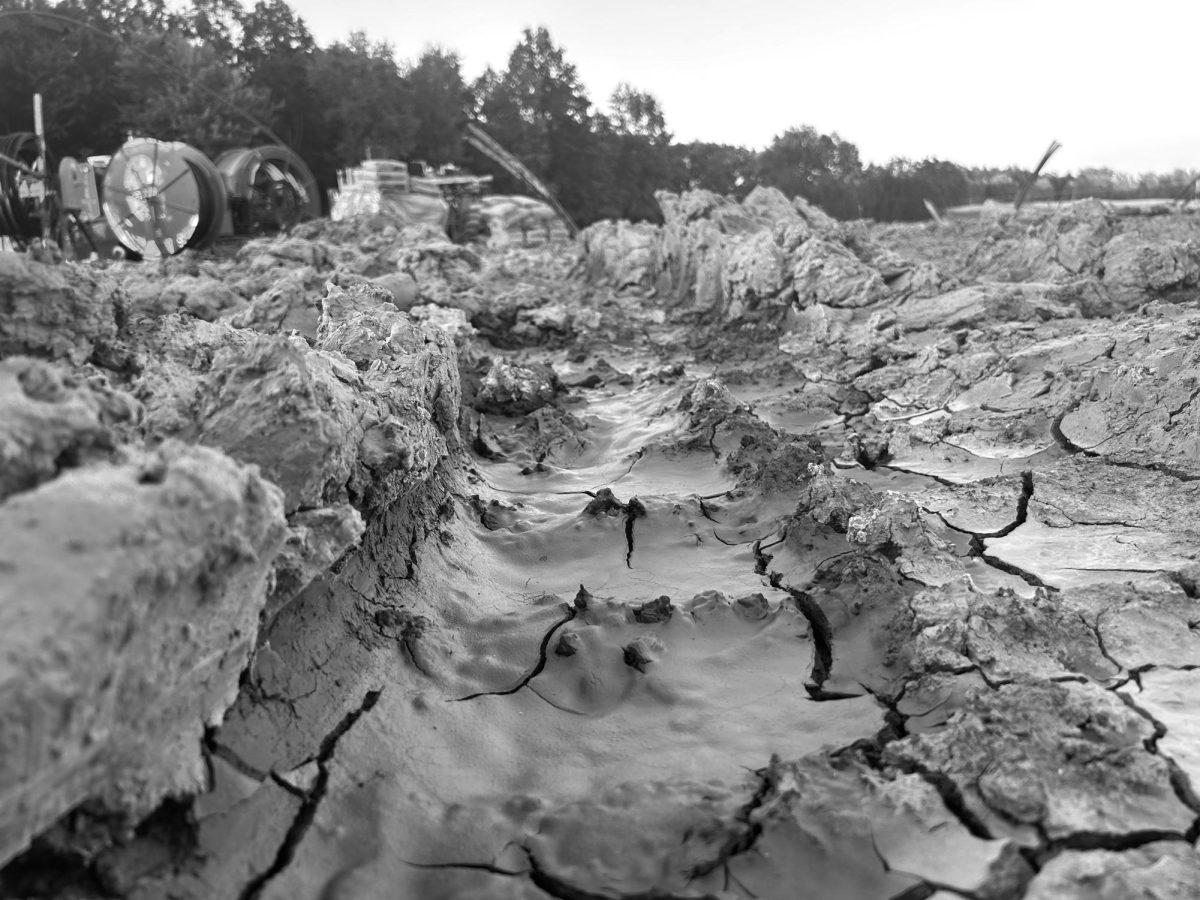As the Sustainable Infrastructure Program approaches its final year in 2025, I’ve been thinking about Oberlin’s environmental mission. The SIP is a sprawling earthwork project systematically reshaping Oberlin’s relationship to energy — most notably by gutting the old hot-water system and replacing it with geothermal piping. It will bring Oberlin 85 percent of the way to achieving its stated goal of carbon neutrality by 2025.
With a price tag of $140 million, the project has been financed, in part, by $80 million in climate bonds. The origin of the project is impressive. In 2006, under then College president Nancy Schrom Dye, Oberlin was one of the twelve founding members of what today is known as the Carbon Commitment, now with over 500 signatories.
As a fourth-year student who has witnessed this project sweeping over campus for the past two years, I am aware of the impact this initiative has had on the Oberlin community. It has occupied our collective consciousness by presenting one vision of what future sustainability looks like. The project has been well publicized by the Oberlin administration with expansive drone shots of upturned earth and crisp graphic portrayals. Posters plastered with the phrase, “Bold Vision, Big Changes,” seem to have become Oberlin’s second motto.
“You see a campus rallying around — yes, the disruption, yes, the challenge of it — but also knowing and believing that we’re doing something important,” President Carmen Twillie Ambar explained in a video released by the College last year.
I found President Ambar’s quote, and the general way this project has been advertised, indicative of a disconnect I have witnessed between Oberlin students and the long-term vision of the administration and trustees. The idea of the entire campus “rallying” around this issue is somewhat misleading given that it has been financed by trustees.
In early September, hoping to gain a sense of the latest stage in the SIP, I headed to the athletic fields just north of the Williams Field House, which is the site of one of the last stages of the geothermal project. Stumbling across clods of upturned earth and puddles of sludge, I noticed how the land seemed to have lost any semblance of ecological balance. The landscape was at points drought-stricken and water-logged. Strange, artificial ponds of a darkish hue sat next to a mosaic of cracked, dry earth.
This experience reminded me of how students have been rendered onlookers in this new paradigm of sustainability. For the past four years, we navigated around chain link fences with nylon sheets. We waited for the grass to grow back in Wilder Bowl and stepped over the muddy sections of sidewalk. Yet, in the midst of this upheaval, we lost a sense of an embodied ecological awareness and an understanding of what meaningful environmental participation looks like.
Last semester, I reported on the restarting of the Oberlin Ecolympics, along with a new college-wide recycling plan. Unlike the carbon neutral construction projects, these initiatives require collective action on behalf of most students to succeed and don’t make for captivating public relations content. In conversations with faculty and students about the restarting of these programs, it became clear these programs were experiencing growing pains after being shuttered during COVID — students just didn’t carry the same kind of enthusiasm and familiarity they once had.
The SIP era of Oberlin also comes at a time of particularly fraught relations between the Oberlin Student Cooperative Association and the College administration. The nature of OSCA as a student-run, non-profit organization where members cook meals and carry out chores builds an awareness of how collective action can reduce our carbon footprint.
The relationship deteriorated over the COVID-pandemic when OSCA was forced to shut down during the 2020–2021 year. Enrollment has still not recovered from their pre-pandemic levels, and the Kosher Halal Co-op still has yet to reopen its doors. Cooperative living builds environmental awareness and collective action that is different from initiatives like the SIP, which requires involvement from a board of trustees and administration more disengaged from campus life.
At the same time, I understand the administration’s focus on promoting the SIP over other, more student-centered aspects of environmentalism at Oberlin. In a competitive higher education landscape, where questionable markers of excellence, like the U.S. News and World Report, have the potential to negatively impact a college’s admission potential, building a green image to attract new students is critical. This year, Oberlin fell from 39th to 51st on the U.S. News list of liberal arts colleges. College rankings like these place a premium on the statistics and report cards as opposed to less quantifiable metrics, like student organizing and participation in OSCA.
“We have allowed ourselves to be assessed and defined — and in many cases, distracted and diverted — by third parties with entirely different values,” President Ambar said in a comment a few hours later.
These “third parties” that President Ambar identifies, I argue, are also the forces that impact the way the College markets itself. An alternative, more collective worldview is much harder to sell in the Common App marketplace of college applications, where colleges are continually reinforced to project this image of “Bold Vision, Big Changes.”
While the greener future Oberlin is heading toward appears bright, I’m worried that the administration’s celebration of the Sustainable Infrastructure Program as a reflection of Oberlin’s values encourages a sense of complacency among students; it deemphasizes the important role of collective environmental action and distorts how collective actions functions. Although less appealing in the marketplace of higher education, the day-to-day actions of students, faculty, and staff — along with grassroots environmental organizing — are equally critical components in tackling the problem of our generation: climate change.


